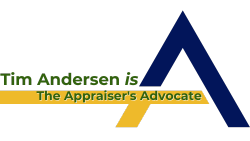INTRODUCTION
It is clear most appraisers do not like to do the Cost approach. This may be because most appraisers simply do not appreciate its power. Consider these 10 Cost approach questions.
10 QUESTIONS TO CONSIDER
Take a look at these 10 questions on the Cost approach (and stuff related to it). After you’re finished, you probably will still not like to do it. But you may appreciate its power more.
- On the 1004 form is the indication that Fannie Mae does not require the Cost Approach to Value. However, where does the form instruct the appraiser not to complete the analytics of the Cost approach?
- Instructions on the form state the appraiser is to “…[p]rovide adequate information to the lender/client to replicate the [herein] cost figures and calculations”. However, where does the typical appraiser provide such replicable information?
- In addition, the report form requires the appraiser to “…[s]upport the opinion of site value [with a] summary of comparable land sales or other methods for estimating site value”. Nevertheless, where does the typical appraiser provide such summary information?
WHAT FANNIE MAE SAYS
Consider this quote from the Fannie Mae Selling Guide, from Highest and Best Use (italics added to the quote):
“The appraiser’s highest and best use analysis of the subject property should consider the property as it is improved. This treatment recognizes that the existing improvements should continue in use until it is financially feasible to remove the dwelling and build a new one, or to renovate the existing dwelling. If the use of comparable sales demonstrates that the improvements are reasonably typical and compatible with market demand for the neighborhood, and the present improvements contribute to the value of the subject property so that its value is greater than the estimated vacant site value, the appraiser should consider the existing use as reasonable and report it as the highest and best use”.
AND THIS TEACHES US… WHAT?
- So, it is clear from these Fannie Mae instructions the appraisal of a SFR includes an analysis and valuation of the subject site separate from the valuation of the site as improved. This means as if the subject site were vacant and available to be put to its highest and best use.
- Suppose the appraiser was not aware of the market value of the subject site as if vacant, as well as the market values of the comparable sales as if vacant. How, then would it possible to adjust for differences in the components of site values?
- How is it possible to make an age/condition adjustment if the appraiser does not know how much the age and the condition of the subject and the comps contribute to their respective market values?
- Assume the appraiser has not determined if there is or is not an entrepreneurial value or profit in the market. This is normally part of the protocols of the Cost approach (or it should be). How, then, can the appraiser determine if construction new is financially feasible? In line with this, how could the appraiser determine if repairs, renovations, or razing the improvements is financially feasible?
- How is the level of market demand (as indicated by the presence/absence of an entrepreneurial incentive or profit) an integral function of the highest and best use process?
- How does the presence or absence of an entrepreneurial incentive or profit help the appraiser to determine the stage at which a neighborhood finds itself as of the effective date of an appraisal?
CONCLUSION AND CALL TO ACTION!
Have these 10 Cost approach questions helped you to understand the power there is in the protocols and analytics of this approach? I’m available to consult with you on a one-time basis, or on an on-going coach/mentor basis. Please contact me for the details: tim@theappraisersadvocate.com. It will be my honor to work with y ou!
